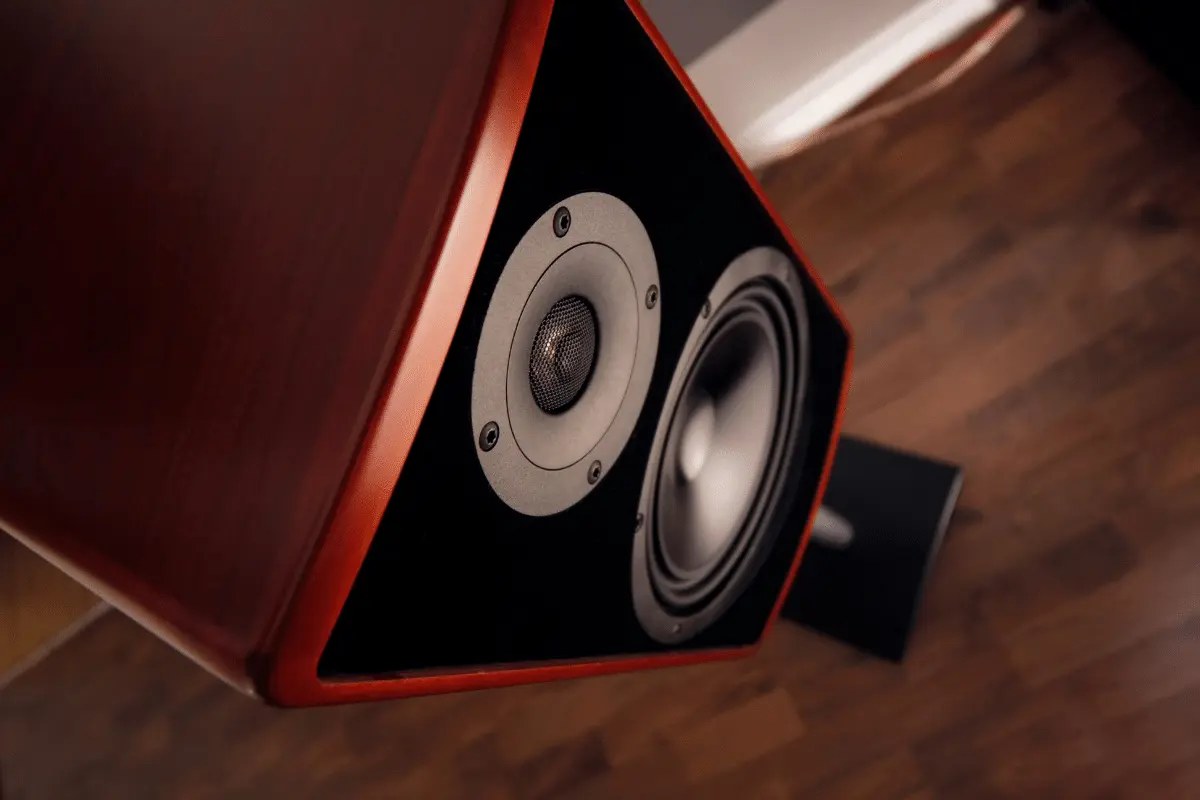When choosing a set of headphones, the pros and cons between closed-back and open-back models should be taken into careful consideration, so then, why do open back headphones sound better overall?
Closed headphones stop airflow which impacts sound play, while open-back headphones allow airflow through and helps keep better sound quality with less echo, more clear and natural sounding. Premium quality open-back headphones allow a better sense of dynamics and stereo imaging qualities.
Lets dig in and explore the overall differences between these headphones and discuss the pros and cons to choosing one over the other!

What Is the Difference Between Open and Closed-Back Headphones?
The key difference between open-back and closed-back headphones is the ventilation of the drivers of the headphones.
Open-back headphones allow for the ventilation of the headphone’s drivers, and the easy passage of air around the driver. This air movement allows the air that is passing through to vibrate freely around the driver.
In open-back headphones, air passes through and around the ear cups and reaches the speaker. Because of its construction, there aren’t echoes that affect the wearer’s sound.
The free movement of air helps prevent pressure from building up and affecting the sound quality of the wearer.
Benefits of Open-Back Headphones
Excellent Sound Experience
Open-back headphones allow free movement of air and sound waves without the pressure that generally accompanies closed-back headphones.
This provides the listener with a more open-sounding listening experience. This allows the headphones to sound closer to a high-quality set of speakers than closed-back headphones.
It is because of the quality of the sound produced by open-back headphones, that they are a bit pricier than their closed-back relatives. The wearer will experience more clear, natural sound.
More Comfort
Open-back headphones reduce “ear fatigue” that can occur during an extended listening time or longer recording sessions.
Their lightweight design makes them more comfortable for the wearer. Efficient air ventilation permits the free movement of air due to the lack of outer coverings. This adds to the comfort level of the wearer.
Sound Leakage
Since open-back headphones allow some leakage of sound through the earpieces to others, they also allow sound leakage to seep into the ear, including outside noises.
Open-back headphones are helpful to the wearer when they need to remain aware of their surroundings. For example, if the listener is walking, gardening, or exercising outside, it is important to be able to hear what is going on in the outdoor environment.
While sound leakage is preferred for some wearers for a more “open” listening experience, this bleed of sound entering the ear and leaving through the earphone can cause interference of sound, which causes the wearer to not be able to focus on just the sound of the music or voice.
Best for Home or Private Listening Locations
Open-back headphones are best for users who are in more private locations. Since they allow for outside sounds to enter the ear, as well as what the wearer is listening to be heard by others nearby the headphones, they are best used in private listening situations where others don’t want to be disturbed.
Pros and Cons of Closed-Back Headphones
Closed-back headphones have pros and cons. The most noticeable benefit is the removal of outside noise and interference. This allows the wearer to be able to focus on the music, podcast, or school lesson that is being listened to.
They greatly dampen the ambient outside noise happening around the wearer, providing further enhancement of the listening experience.
These noise-canceling effects help the wearer to be able to focus on the sound, blocking out the surroundings. It is also beneficial for more than the listener.
Others near the listener won’t be disturbed by what the individual is listening to. Whether it be music, gaming, or a Zoom meeting, closed-back headphones prevent any sound that is coming through the headphones from leaking and disturbing others who may be nearby.
Better for Bass
Closed-back headphones also are better for bass response. The cuplike design of the earpieces forms a seal around the ears and makes it easier for the wearer to hear low bass sounds. For the listener, this provides a more bass-laden sound experience.
For those keeping a close eye on the budget, closed-back headphones are more affordable than most open-back headphones.
Good for Your Ears
Closed-back headphones offer the wearer complete isolation from outside external noise. They provide an immersive listening experience, where outside interference is kept to a minimum. This also allows the user to lower the volume, lessening the possibility of long-term hearing damage.
Minimal Sound Leakage
Additionally, closed-back headphones allow minimal sound leakage, so they can be worn in situations where there are others present and disturbance must be kept to a minimum—like in a quiet library, or on a crowded subway train.
Less Breathable and Can Cause Fatigue
The cons of closed-back headphones are that they are less breathable. This may cause the user to experience listening fatigue.
Because of the shape of the ear cups, and the enclosure of the ear, the pressure is greater with closed-back headphones than with open-back ones.
Weigh the Pros and Cons Before You Buy
The pros and cons of both open and closed-back headphones should be taken into consideration before making such a costly purchase.
Open-back headphones have many benefits. They are known to be more comfortable and breathable than closed-back headphones due to their construction and design.
Because of this breathability, ear fatigue is limited or lessened. They also offer a more “open” sound, giving the user a more transparent, listenable sound experience, while helping the wearer not feel as “closed in” by sound.
Cons of open-back headphones are that they are more expensive than the traditional closed-back styles. Additionally, while some wearers prefer some level of sound leakage into and out of the ear, others may find outside noise to be a distraction.
Open Back Headphones — Clear Choice for a More Natural Listening Experience
Different listeners have different preferences when it comes to closed or open-back headphones. How frequently they will be used, the types of situations and locations they will be used in, the cost, and the qualities the user prefers should all be considered before making a choice.
Word-of-mouth, along with reviews and research should be done carefully before the purchase. For a more natural listening experience, open-back headphones may be just the right fit.






Leave a Reply
You must be logged in to post a comment.